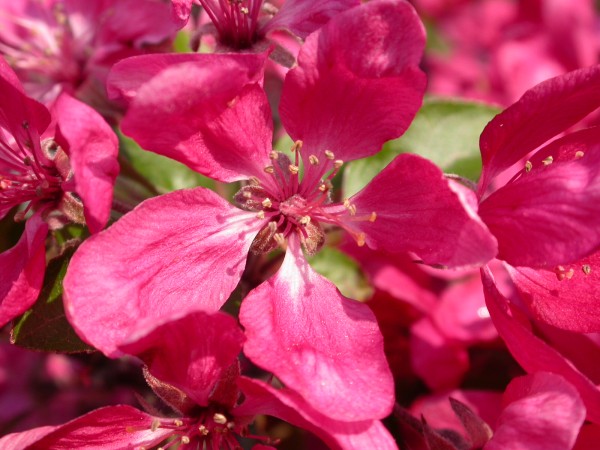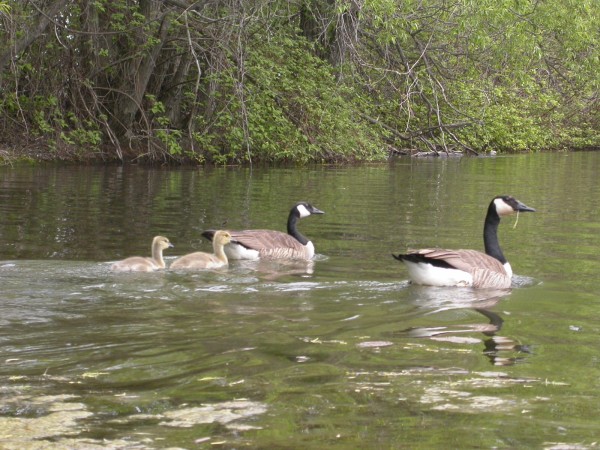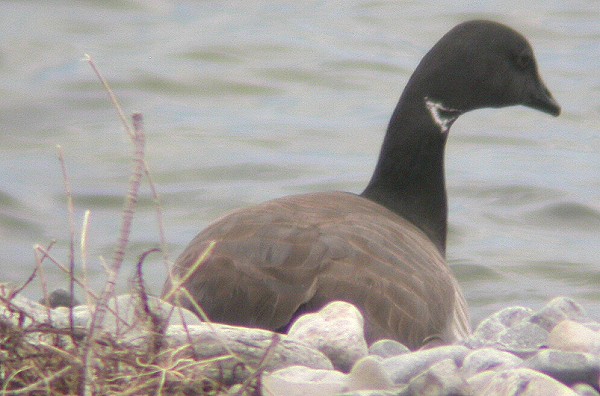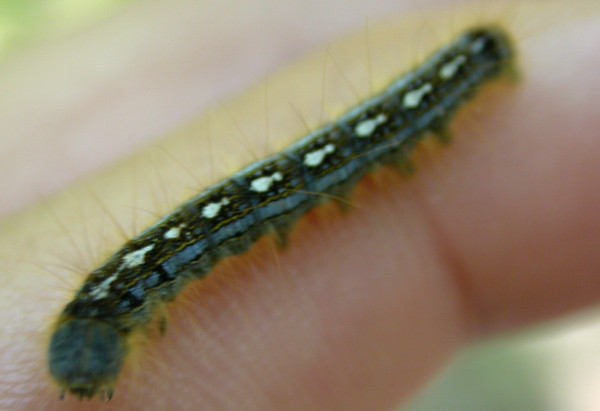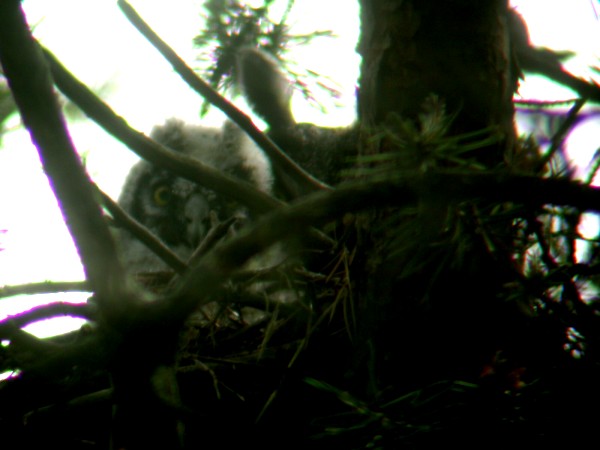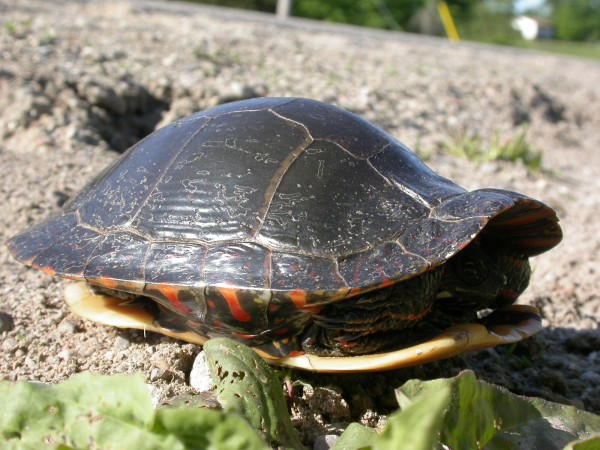|
BAILLIE BIRDATHON |
|||||||||||||||||||||||||||||||||||||||||||||||||||||||||||||||||||||||||||||||||||||||||||||||||||||||||||||||||||||||||||||||||||||||||||||||||||||||||||||||||||||||||||||||||||||||||||||||||||||||||||||||||||||||||||||||||||||||||||||||||||||||||||||||||||||||||||||||||||||||||||||||||||||||||||||||||||||||||||||||||||||||||||||||||||||||||||||||||||||||||||||||||||||||||||||||||||||||||||||||||||||||||||||||||||||||||||||||||||||||||||||||||||||||||||||||||||||||||||||||||||||||||||||||||||||||||||||||||||||||||||||||||||||||||||||||||||||||||||||||||||||||||||||||||||||||||||||||||||||||||||||||||||||||||||||||||||||||||||||||||||||||||||||||||||||||||||||||||||||||||||||||||||||||||||||||||||||||||||||||||||||||||||||||||||||||||||||||||||||||||||||||||||||||||||||||||||||||||||||||||||||||||||||||||||||||||||||||||||||||||||||||||||||||||||||||||||||||||||||||||||||||||||||||||||||||||||||||||||||||||||||||||||||||||||||||||||||||||||||||||||||||||||||||||||||||||||||||||||||||
|
147 bird species, 695 (+20) kilometres, 1 rescued turtle, and a forest dripping with caterpillars... ... that's the quick summary of my Birdathon this year. The long version follows below. The motto for my Birdathon this year could have been "familiarity breeds success". After a few years of trying various different routes based out of Montreal, I decided to return to an eastern Ontario focus. It was also the first time in several years that I was doing the Birdathon entirely alone, so instead of a full 24 hours of searching, I took a 5-hour break for sleep and woke up in time to add a few final species to my list before my 24-hour window of opportunity ticked to a close. Despite a somewhat reduced effort, I ended up with a very nice list of 147 species, the highest I've ever managed on a solo attempt. No doubt that was in part due to shaking the bad weather jinx that has followed me for several years - this time the weather was near perfect, with a high in the low 20s, a light breeze off Lake Ontario, and mostly sunny skies. The plan this year was to do a Birdathon with relatively minimal driving. Since I needed to drive from Toronto to Montreal on May 27 anyway (500 kilometres), and there are many good birding locations along the way, it was the perfect opportunity for this year's count. Though I deviated from the direct route a fair bit toward the end, I still added less than 200 extra kilometres to the drive. Along the way, all the sites I visited were ones with which I was familiar, though in most cases it has been two or three years since I last had a chance to see them. I was happy to find that in most cases, the birds I remembered being at particular sites were readily found there again. Normally on a day like this, it's wise not to overdo the walking (for the sake of both time and energy), but I couldn't resist exploring these old haunts a bit, and ended up covering over 20 km on foot. I did quite well this year with waterfowl (18 species), shorebirds (16 species), and sparrows (11 species), but fell short on warblers (17 species) despite getting a few less common ones, and had a particularly poor day with raptors (only 6 species). I also spotted a good variety of mammals, including a Porcupine waddling across Opinicon Road, a White-tailed Deer snorting at me along the edge of Second Marsh, a couple of Muskrats at Cranberry Marsh, and a Meadow Vole on Amherst Island, plus the usual Eastern Chipmunk, Red Squirrel, and Gray Squirrel. North of St-Isidore I saw several large moose tracks, but couldn't see the beasts themselves. Here is how the day unfolded: Scarborough (SC): I began at dawn along the Scarborough Bluffs. I was hoping for Orchard Orioles at East Point Park, and got one at the usual spot, but was also pleased to hear American Woodcocks "peenting" away nearby. The best surprise though was a Carolina Wren singing as I drove down a residential area near the park. 28 species in 20 minutes - a good start to the day. Cranberry Marsh (CM): My second stop was at Hall's Road, on the west side of Cranberry Marsh in Ajax. The marsh has filled in a lot, but Marsh Wrens and a Sora called obligingly, and there was a lone American Coot in a more open area near the southwest corner. The most unexpected bird here was a Golden-crowned Kinglet in the spruces along the south path. I was also surprised to see that the Common Loon migration is still going strong, with 32 birds flying north from Lake Ontario during the half hour I was there. Thickson's Woods (TW): One of the day's few disappointments was Thickson's Woods. Reportedly hopping with warblers until a few days before, it was virtually silent when I visited, with just local breeders such as Yellow Warblers and Common Yellowthroats singing. It was the only location I visited all day that didn't produce at least one species seen nowhere else. Second Marsh (SM): Things picked up again at Oshawa's Second Marsh. The disturbing trend of few migrant warblers continued here, but otherwise diversity was good. I hiked around for nearly two hours, to cover as many different habitats as possible, and found 72 species, boosting my total to 87 by the time I left at 8:45 am! This included a nice assortment of 8 shorebirds on a small mudflat, including a beautifully red-bellied Short-billed Dowitcher. Other highlights were a Blue-gray Gnatcatcher, and a nice mix of ducks such as Green-winged Teal, Gadwall, and American Wigeon.
Presqu'ile Provincial Park (PQ): A couple of times in recent years I've included Presqu'ile in my Birdathon itinerary, and have come away disappointed. However, since it was right along my route this year, and I still had few shorebirds on my list after leaving Second Marsh, I decided to give it one more try. Once I was in the park, a couple of local observers told me that it has been an unusually quiet spring for shorebird migration there. However, I did see the Wilson's Plover, a lifer for me, and a species which had only a few days previously been added as the 41st (!) shorebird on the Presqu'ile checklist. Another local rarity, a Forster's Tern, was resting on a gravel bar, and I also added Ruddy Turnstone and White-rumped Sandpiper to my list before leaving the beach. Elsewhere in the park, a couple of well-placed stops along the loop road yielded my only Eastern Phoebe and Blackburnian Warblers of the day. By the time I left at 11:15, I was on record pace for a Birdathon, up to 98 species already. However, I still had only 9 warblers, and not a single raptor, and knew that I would have to address those shortfalls at some point.
Amherst Island (AI): After Presqu'ile, I knew I had to drive some distance east on Hwy 401 no matter what. The hour on the highway gave me time to wrestle with a tough decision - head straight for Opinicon Road and then up through Ottawa into boreal habitat for the warblers and other woodland birds I had missed earlier, or detour via Amherst Island to try to round out my shorebird and waterfowl lists. Since Amherst has never yet disappointed me, I gave in to the temptation and hopped on the 12:30 ferry. As it happened, an Ontario Field Ornithologists field trip was also on that ferry, and had just come down from Opinicon Road. I took the opportunity to catch up with a couple of old friends, and learned that Opinicon had been very good to them in the morning, giving me hope for my plans later in the afternoon. Just before reaching the island, I spotted a Barn Swallow, my 100th species of the day. Once the ferry docked, I headed straight for the east end of the island in order to hike out to the gravel bar for shorebirds. It's a fair investment of time on a day like this where every minute can count, but it's usually worth the effort, and this time was no exception. Out at the tip, I heard and then saw a lone Whimbrel, and had my only Ring-necked Duck, Lesser Scaup, Common Merganser, American Black Duck, and Baird's Sandpiper of the day. Along the way, I added another three species seen nowhere else - Brant, Osprey, and Purple Martin. Since the walk was productive enough to cause me to miss the first ferry back, I also took a stroll through the woods, and was rewarded with several more good additions, including Black-billed Cuckoo, Wood Thrush, and Field Sparrow. With nearly 80 species overall on Amherst Island, and 14 of them unique for the day, it was 3 hours well spent.
Napanee Area (NA): Though my next main destination was Opinicon Road, I decided that I could profit by driving the back roads through the Napanee area on my way there, rather than going directly along the 401. I lost a bit of time this way, but happened across a couple more raptors (Sharp-shinned and Red-tailed Hawks) and got the always difficult Vesper Sparrow, though the Grasshopper Sparrows that used to be reliable in the area weren't singing for me. Opinicon Road (OR): A mostly gravel sideroad northeast of Kingston, Opinicon offers easy access to a unique transitional forest where the Carolinian zone meets the Canadian Shield. The area is particularly well known for its remarkably high density of Cerulean Warblers, and I found them with ease by driving slowly with the windows down. I also managed to see several of them well, thanks to an already very defoliated canopy. The culprit? Tent caterpillars - they were as abundant as I've ever seen them, and were dropping from the trees constantly (it sounded like a heavy rain hitting the forest!). After just a short walk along a wooded trail, I was covered in dozens of them ... the cuckoos will soon be having a feast! Most of the other Opinicon Road specialties also cooperated well, including Yellow-throated Vireo, Golden-winged Warbler, Eastern Bluebird, Indigo Bunting, and Scarlet Tanager. The 11 new species here, including 8 which I didn't see again subsequently, brought me to 132 for the day, with nearly 3.5 hours of daylight remaining.
Embrun (EM): After leaving Opinicon Road, I had a dull 90-minute drive northeast to Embrun - I had hoped to chance across some Wild Turkeys or an American Kestrel, but saw very few birds at all, and nothing that was new for the day. The lagoons at Embrun were as quiet as I've ever seen them, but at least there was a lone Northern Pintail and a Common Moorhen on shore, and it was right on the route to my next stop anyway. St-Isidore (ST): My last chance for boreal species was a patch of dense mixed forest northwest of St-Isidore. Criss-crossed by a few very narrow gravel roads, I discovered this area during the Ontario Breeding Bird Atlas and found it to host a surprising diversity of breeding warblers. Unfortunately, on this occasion I learned that it also supports an incredibly thriving population of bloodthirsty mosquitoes! It was worth it though. It was getting late, and so just over 20 species were still singing, but almost a quarter of them were unique for the day, including two warblers (Canada and Nashville) and a thrush (Hermit). On the north side of the area is a small Christmas tree plantation, and the resident Clay-colored Sparrow offered up its wispy buzz of a song right on cue, as species 140. Alfred (AL): The municipal sewage lagoons at Alfred have long been known as a great place to find a wide variety of waterfowl and shorebirds. Unfortunately, the town now requires birders to purchase a permit to enter the property, and I hadn't bought one, not expecting to end up in this area! However, standing on the trunk of my car gave me enough of a view into the first pond to spot two pairs of Redhead, and a surprisingly large flotilla of Ruddy Ducks, bringing my total up to 142.
Atocas Bay (AT): During MRF's Short-eared Owl work in the summer of 2003, I became familiar with the Atocas Bay wetland project by Ducks Unlimited, just south of the Ottawa River near Hawkesbury. What I had since forgotten was how muddy and treacherous a couple of the local roads there are ... but the less said about nearly getting stuck in a surprisingly deep puddle, the better! I wasn't really expecting to see a Short-eared Owl this time, but since the sun had already set and I had only a half hour or so of light left, I thought it was worth walking in just in case, knowing that I might be able to at least improve my heron count. Sure enough, an American Bittern was 'pumping' away relentlessly. I lingered for a while, hoping for the elusive owl, or perhaps a Common Nighthawk, but had no such luck. As the Willow Flycatchers, Bobolinks, Gray Catbirds, and Marsh Wrens all gave their final calls for the night, I headed back to the car, and at 9:30 pm headed into the home stretch with a list of 143 species despite having never really overcome my shortage of warblers and raptors.
McGill Bird Observatory (MBO): Since the rules of the Birdathon stipulate that it can be done over any consecutive 24-hour period in May, and I was getting up before sunrise on Sunday anyway to run the banding session at McGill Bird Observatory, I thought back to the birds I had seen in Scarborough as my count started. The first 'unique' bird of the day was the Orchard Oriole at 5:15 am, so I set that as my cutoff point. Fortunately there were still some late migrants hanging around at MBO, and they were vocal early thanks to the clear skies. The Magnolia Warbler and Black-throated Green Warbler were easy, as they were in the same spots they had been when I was last there a week earlier. In the same area, I lucked into a Yellow-bellied Flycatcher. I then raced the other way, hoping that the Mourning and/or Black-throated Blue Warblers had also stayed put, but no such luck with them. Instead though, at 5:14, I heard and then spotted a Blackpoll Warbler, species #147. Were the time limit 25 hours, I could have also added the Green Heron, Pileated Woodpecker, and Common Raven that appeared in the next hour ... but I guess the quest for a solo 150 species will have to wait for another year! Below, a listing of all the species I observed, and their locations. Note that I wasn't taking accurate notes of abundance along the way, so the numbers are rough estimates only (increasingly so for larger quantities). An asterisk indicates species heard only, and numbers in red indicate a species recorded only at one site. The sites are abbreviated as follows:
SC - Scarborough (Guildwood
/ East Point Park) -- 0.5 hours, 1 km walking LOONS / GREBES - 2 (2)
When I saw the first Common Loon fly overhead at Cranberry Marsh, I considered myself lucky to be able to get it on my list for the day ... then as I watched another 31 stream overhead in less than half an hour, I was amazed at such a substantial migration this late in May. The Pied-billed Grebes were far less abundant, but easy enough to both hear and spot at Cranberry Marsh, as well as the Alfred lagoon. CORMORANTS / HERONS - 5 (6)
As a group, the herons were relatively challenging. In the past, I've seen Green Herons regularly at no fewer than 7 of the locations I visited, but all of them came up empty. I thought Great Egret would be easier too, but only spotted a lone bird just before leaving Presqu'ile - oddly, it was soaring with a group of gulls! WATERFOWL - 18 (19)
While the waterfowl list is respectable, it wasn't easy going - as reflected by the 11 of 18 species that were seen at only one location. A few of these are reliable at the sites they were seen, such as the Ruddy Ducks at Alfred, but most are not - so I actually consider myself quite lucky to have spotted them all. RAPTORS - 6 (11)
A very disappointing list, entirely lacking in falcons, and also missing relatively common species such as Cooper's Hawk and Broad-winged Hawk. Raptors are never easy on a Birdathon, but I've rarely had such poor luck with them before. I can't recall the last time that I was out for a day and saw more Northern Harriers than any other raptor.
GALLIFORMES - 0 (3) RAILS - 4 (4)
The same four species as last year, all seen or heard in very small numbers. Again a case where I got lucky, offsetting the poor fortune I had with the previous two groups of birds. SHOREBIRDS - 16 (11)
Shorebird habitat is much more extensive in eastern Ontario than southwestern Quebec, so it is no surprise that this is the one group where my numbers increased the most over last year. All the same, numbers were modest, and there were 7 species that I spotted at only one location. Seeing my first ever Wilson's Plover was one of the day's highlights, even if it was a rather distant view. GULLS / TERNS - 7 (8)
Visiting Second Marsh and Presqu'ile, at least 6 gull and tern species can be expected, though Black Terns are getting increasingly scarce. The Forster's Tern was an unexpected bonus at Presqu'ile, offsetting the surprising lack of Bonaparte's Gulls.
NIGHTJARS - 0 (2) DOVES - 2 (2)
At least there's one group of birds that never is difficult to find! CUCKOOS - 1 (0)
Despite the abundance of tent caterpillars along Opinicon Road, I didn't find either cuckoo species there. At least there was a quite cooperative Black-billed on Amherst Island. OWLS - 1 (3)
A poor showing with owls this year, thanks to deciding to sleep during the night, and not having any areas scouted out in advance for Great Horned Owl or Barred Owl, which should otherwise both be possible with relative ease. However, seeing the young Long-eared Owl in its nest was a moment that more than made up for the lack of any other species (location not disclosed to prevent any potential disturbance of the nest site). SWIFTS / HUMMINGBIRDS / KINGFISHERS - 2 (2)
Swifts and hummingbirds can be tricky to find. I was lucky with a Ruby-throated Hummingbird perching on a snag right beside Opinicon Road, its red feathers shining in the light enough to attract my eye. Swifts twittering overhead in a couple of spots prevented me from having to serach them out. One of the most surprising misses of the day, however, was Belted Kingfisher - given the number of wetlands I visited, it seems inconceivable that I didn't encounter any, but there are always a couple of species like this every year... WOODPECKERS - 4 (5)
Woodpeckers can be relatively quiet in May, so seeing 4 of the 'regular' 5 species isn't bad. The Yellow-bellied Sapsucker was particularly obliging, flying across the road in front of me late in the day. FLYCATCHERS - 7 (6)
It seems like every year I miss one of the flycatchers; this year it was the Alder Flycatcher's turn. Interestingly, it's the Willow Flycatcher, visually indistinguishable from the Alder, that I had missed the past few years, and it was by far the most abundant species of the day this year! SWALLOWS - 6 (6)
It was strange to make it to 100 species before spotting the first Barn Swallow of the day, but it was just a matter of time before spotting them somewhere. The only real concern was Purple Martin, which has become a very localized and generally uncommon breeder. Fortunately, Amherst Island remains a great location to spot all six swallow species with relative ease. CORVIDS - 2 (4)
This is where it hurt to not visit any truly boreal site, as there was no potential for Gray Jay, and opportunities for Common Raven were limited. CHICKADEES / NUTHATCHES / CREEPERS / KINGLETS / GNATCATCHERS - 5 (6)
An eclectic list for this group, with some interesting omissions. Red-breasted Nuthatch should have been easily possible at a couple of stops along the way, and Ruby-crowned Kinglet was much more probable than Golden-crowned, yet I couldn't find one anywhere. The gnatcatchers are a 'southern specialty' that I've missed the past few years. WRENS - 3 (3)
Getting three wren species is fairly normal, but usually it's Winter Wren instead of Carolina. Like the Red-breasted Nuthatch and some of the warblers, the Winter Wren wasn't missed for lack of trying in suitable habitat - it's just that it didn't happen to sing at the right time, while the Carolina did burst into song as I happened to pass by its location. THRUSHES - 6 (7)
The thrush situation was looking pretty meager for most of the day, but the St-Isidore area came through with Swainson's and Hermit Thrushes to make the list respectable. No doubt Grey-cheeked Thrushes were also migrating through some of the sites I visited, but they tend to be rather quiet and secretive, so having the 'full set' like last year isn't something I was expecting to repeat. MIMIDS - 2 (2)
The usual two species in this group. Starting in Toronto, I should have been able to get a Mockingbird too, but hadn't scouted out a local bird in advance. Brown Thrashers were generally quite scarce, except on Amherst Island, where they seemed to be everywhere. STARLINGS / SHRIKES / WAXWINGS - 2 (2)
Another category where the expected two species were found with ease. I could have made a detour for a fairly reliable Loggerhead Shrike, but it would probably have taken too much time away from other sites with more diverse potential. VIREOS - 4 (4)
A reasonably good list for vireos, with Yellow-throated and Blue-headed both coming through as expected on Opinicon Road, and Philadelphia Vireo being a not unexpected miss. WARBLERS - 17 (19)
Warblers were a challenge throughout the Birdathon. Never before have I made it to noon on a Birdathon without cracking double digits with warblers, and 17 is among the lowest totals I've ever had, despite the inclusion of Golden-winged, Cerulean, and Canada, each of which I've only seen on three or fewer previous Birdathons. On the positive side, Yellow Warblers were abundant, and were the only species I observed at every one of the locations I visited. TANAGERS / FINCHES - 7 (9)
By not including any truly boreal habitat on my route, I knew I was limiting my opportunities for finches, so the relatively short list here is to be expected. House Finches were quite vocal and numerous in the village of Stella on Amherst Island, which is fortunate as they were absent (or at least silent) everywhere else. SPARROWS - 11 (9)
Despite missing out on Grasshopper Sparrow at three very different locations, the sparrow list was a long one. Towhee, Clay-colored, Field, Vesper, Lincoln's, White-crowned, and even Savannah have all given me trouble in recent years, but most of these are much easier to find in eastern Ontario than southern Quebec. Even so, the Lincoln's and White-crowned Sparrows at Second Marsh were a bit of a fluke, as they are both migrants that should have largely moved through by this time. BLACKBIRDS - 7 (5)
Starting in Scarborough made it easy to include Orchard Oriole on my list for the first time in years. The rest of the blackbirds were all common and widespread, with the Bobolink especially abundant - a nice contrast to recent years when it and Eastern Meadowlark were among the most difficult birds to find in southern Quebec. TOTAL - 147 (160)
Clearly it paid off to visit a number of different sites, since all but Thickson's Woods produced at least one species seen nowhere else, and over 40% of the species I recorded occurred at just one location (38 of them represented by a single individual). 21 species were heard only. All in all, it was one of the most enjoyable, and most successful Birdathons I've ever done. Thank you again for your support in aid of both the Migration Research Foundation and Bird Studies Canada!
|

